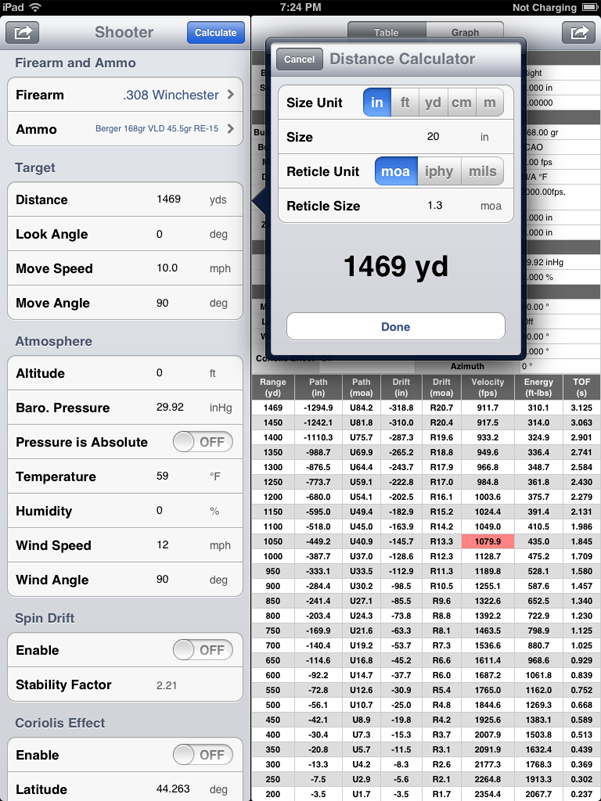How to Calculate Box 1 of W2: A Clear Guide
Calculating Box 1 on your W-2 form can be a daunting task for many individuals. Box 1 reports an employee's total taxable wages, tips, and other compensation for federal income tax purposes. It is important to have a clear understanding of Box 1 as it determines the amount of federal income tax withheld from an employee's paycheck throughout the year.
To calculate Box 1 of your W-2, you need to understand what types of compensation are included in this box. According to the Internal Revenue Service (IRS), Box 1 includes all taxable wages, tips, and other compensation paid by an employer to an employee during the year. This includes regular wages, overtime pay, bonuses, commissions, and taxable fringe benefits. It is important to note that non-taxable income, such as contributions to a retirement plan or certain health insurance premiums, is not included in Box 1.
Understanding the components of Box 1 is crucial as it determines the amount of federal income tax withheld from an employee's paycheck. Employers are required to use the information reported in Box 1 to calculate the amount of federal income tax to withhold from an employee's paycheck. By having a clear understanding of Box 1, employees can ensure that the correct amount of federal income tax is withheld from their paychecks throughout the year.
Understanding Your W-2 Form
When it comes to tax season, one of the most important documents you'll receive is your W-2 form. This form provides a summary of your earnings and taxes withheld throughout the year. Understanding the information on your W-2 is crucial for accurately filing your taxes and avoiding penalties.
The W-2 form has several boxes, each with its own purpose. Box 1 shows your total taxable wages, tips, and other compensation for the year. This includes your regular salary or hourly pay, as well as any bonuses, commissions, or other forms of compensation you received.
It's important to note that not all of your earnings may be subject to federal income tax. For example, if you contributed to a pre-tax retirement plan, your Box 1 wages may be lower than your Box 3 wages. Additionally, any non-cash payments you received, such as prizes or awards, should also be included in Box 1.
Other boxes on the W-2 form include Box 2, which shows the total amount of federal income tax withheld from your wages, and Box 3, which shows your total wages subject to Social Security tax. Box 4 shows the amount of Social Security tax withheld, while Box 5 shows the amount of Medicare tax withheld.
Overall, understanding the information on your W-2 form is crucial for accurately filing your taxes and avoiding penalties. If you have any questions about your W-2, don't hesitate to contact your employer or a tax professional for assistance.
Defining Box 1: Wages, Tips, Other Compensation
Box 1 of Form W-2 is used to report the total taxable wages, tips, and other compensation paid to an employee during the tax year. It is important to accurately calculate and report the amounts in Box 1 to ensure that employees pay the correct amount of federal income tax.
Components of Box 1
Box 1 includes all taxable wages, tips, and other compensation paid to an employee during the tax year. This includes regular wages, overtime pay, bonuses, commissions, and any other taxable compensation. It is important to note that non-taxable compensation, such as contributions to a retirement plan or health insurance premiums, should not be included in Box 1.
Taxable Income Reporting
Employers are required to report all taxable income paid to employees on Form W-2. This includes income subject to federal income tax, Social Security tax, and Medicare tax. The amounts reported in Box 1 of Form W-2 are used to calculate an employee's federal income tax liability.
It is important to accurately report the amounts in Box 1 to avoid penalties and ensure that employees pay the correct amount of federal income tax. Employers should carefully review their payroll records to ensure that all taxable compensation is included in Box 1 and that any non-taxable compensation is excluded.
Calculating Gross Income
Calculating gross income from a W2 form is an essential skill for managing finances effectively. Gross income is the total amount of income earned before any deductions are taken out. Box 1 of the W2 form shows the total amount of taxable wages, tips, and other compensation paid to an employee during the year.
To calculate gross income from a W2 form, you will need to add up the amounts in Box 1 of all W2 forms received for the year. If an employer did not withhold any taxes, the gross income will be the same as the amount in Box 1. However, if taxes were withheld, the gross income will be higher than the amount in Box 1.
It is important to note that not all income is taxable. Some types of income, such as gifts or inheritances, are not subject to federal income tax. Additionally, some income may be exempt from state or local taxes. It is important to consult with a tax professional to determine which types of income are taxable and which are not.
To ensure accurate calculations, it is important to keep accurate records of all income received throughout the year. This includes income from all sources, such as wages, tips, and bonuses. Keeping detailed records will make it easier to calculate gross income and ensure that all income is properly reported on tax returns.
Overall, calculating gross income from a W2 form is a straightforward process that can be easily accomplished with the right tools and knowledge. By following these steps and consulting with a tax professional when necessary, individuals can ensure that their finances are managed effectively and their taxes are properly filed.
Adjustments to Gross Income
Adjustments to Gross Income, also known as above-the-line deductions, are expenses that can be subtracted from an individual's gross income to calculate their Adjusted Gross Income (AGI). AGI is an important figure to calculate because it determines eligibility for certain tax deductions and credits.
Pre-Tax Deductions
Pre-tax deductions are expenses that are taken out of an individual's gross income before taxes are calculated. These deductions can include contributions to a retirement plan, health insurance premiums, and other qualified expenses. Pre-tax deductions can reduce an individual's taxable income, which in turn can lower the amount of taxes owed.
For example, if an individual earns $50,000 in gross income and contributes $5,000 to a 401(k) plan, their taxable income would be reduced to $45,000. This reduction in taxable income could result in a lower tax bill.
Other Adjustments
Other adjustments to gross income include expenses that cannot be deducted as itemized deductions, but can still be subtracted from an individual's gross income to calculate their AGI. These adjustments can include student loan interest, alimony payments, and certain business expenses.
For example, if an individual earned $50,000 in gross income and paid $2,000 in student loan interest, their AGI would be reduced to $48,000. This reduction in AGI could result in a lower tax bill or eligibility for certain tax credits.
It is important to note that not all expenses can be deducted as adjustments to gross income. Individuals should consult with a tax professional or refer to IRS guidelines to determine which expenses are eligible for deduction.
Specific Situations Affecting Box 1
Retirement Contributions
Retirement contributions are one of the most common reasons for differences between Box 1 wages and Social Security wages, Medicare wages, and state and local income wages. If an employee elected to contribute to a pre-tax retirement plan, their W-2 Box 1 wages will be lower than their Box 3 wages. This is because the contributions made to the retirement plan are not subject to federal income tax, Social Security tax, or Medicare tax.
Fringe Benefits
Fringe benefits are another factor that can impact Box 1 wages. Noncash payments, such as taxable fringe benefits, are included in Box 1 wages. Examples of taxable fringe benefits include company cars, housing allowances, and personal use of a company credit card. The value of these benefits must be included in Box 1 wages, even if they were not paid in cash.
Educational Assistance Programs
Employer-sponsored educational assistance programs can also affect Box 1 wages. If an employer provides educational assistance to an employee, up to $5,250 per year can be excluded from the employee's income and is not subject to federal income tax, Social Security tax, or Medicare tax. However, any amount over $5,250 must be included in Box 1 wages.
It is important to note that these are just a few examples of specific situations that can impact Box 1 of the W-2 form. Employers should consult with a tax professional or refer to IRS guidelines for more information on how to accurately calculate Box 1 wages.
Common Errors and Corrections
Even with careful attention to detail, errors can occur when calculating Box 1 of the W-2 form. Here are some of the most common errors and how to correct them:
Incorrectly Reported Wages
One of the most common errors is when an employee's wages are incorrectly reported in Box 1. This can happen if the employer fails to include all taxable wages, such as bonuses or noncash payments. If this happens, the employer must issue a corrected W-2 form, known as a W-2c, to the employee. The corrected form should include the correct amount in Box 1 and must be filed with the Social Security Administration.
Incorrect Employee Information
Another common error is when employee information, such as their name or Social Security number, is reported incorrectly on the W-2 form. If this happens, the employer must issue a corrected W-2 form to the employee with the correct information. The employer must also file a W-2c with the Social Security Administration.
Failure to File or Late Filing
If an employer fails to file the W-2 form or files it late, they may face penalties from the IRS. To avoid penalties, employers should ensure that they file the W-2 form on time and accurately. The deadline for filing the W-2 form is January 31st of each year.
Failure to Provide Copies to Employees
Employers are required to provide copies of the W-2 form to their employees by January 31st of each year. Failure to provide copies to employees can result in penalties from the IRS. Employers should ensure that they provide copies of the W-2 form to their employees on time and accurately.
Conclusion
Calculating Box 1 of the W-2 form can be a complex process, but with careful attention to detail, employers can avoid common errors and ensure that they file accurate forms. By correcting errors promptly and filing the W-2 form on time, employers can avoid penalties and ensure that their employees receive the correct tax information.
Using Box 1 for Tax Preparation
Box 1 of the W-2 form shows the total taxable wages, tips, and other compensation an employee received from their employer during the tax year. This box is crucial for tax preparation because it determines the amount of federal income tax an employee owes.
To calculate an employee's federal income tax, the employer uses the employee's W-4 form and the IRS tax tables to determine the amount of tax to withhold from the employee's paycheck. The total amount of federal income tax withheld throughout the year is reported in Box 2 of the W-2 form.
When an employee receives their W-2 form, they should review Box 1 to ensure that the amount reported matches the total taxable wages, tips, and other compensation they received throughout the year. If there is a discrepancy, the employee should contact their employer to resolve the issue.
It is important to note that Box 1 does not include any pre-tax deductions an employee may have, such as contributions to a 401(k) plan or health insurance premiums. These deductions lower an employee's taxable income, which is reported in Box 1.
In summary, Box 1 of the W-2 form is a crucial component for tax preparation. It reports an employee's total taxable wages, tips, and other compensation for the year and determines the amount of federal income tax owed. Employees should ensure that the amount reported in Box 1 matches the total amount they received throughout the year and contact their employer to resolve any discrepancies.
Record-Keeping and Verification
Once the employer has calculated Box 1 of the W-2 form, it is crucial to maintain accurate records of the wages paid to each employee. The employer must keep a copy of each employee's W-4 form and W-2 form for at least four years after the due date of the tax return filed for the year in which the wages were paid.
Employers must also verify the accuracy of the information reported on the W-2 forms. One way to do this is to perform a reconciliation between the total wages reported on the W-3 form and the total amount of wages paid to employees during the year. Any discrepancies should be investigated and corrected as soon as possible.
It is important to note that failure to maintain accurate records and verify the information reported on the W-2 forms can result in penalties and fines from the IRS. Therefore, employers should take this responsibility seriously and ensure that all necessary steps are taken to maintain accurate records and verify the information reported on the W-2 forms.
Frequently Asked Questions
What determines the amount reported in Box 1 of my W-2?
Box 1 of the W-2 form reports the total taxable wages, tips, and other compensation received by an employee from their employer during the tax year. The amount is determined by adding up all the taxable compensation paid to the employee during the year, including regular wages, overtime pay, bonuses, commissions, and taxable fringe benefits.
How is taxable income reflected in W-2 Box 1 different from gross income?
W-2 Box 1 reflects the total taxable compensation paid to an employee during the tax year, while gross income is the total income earned by an employee before any deductions or taxes are taken out. The taxable income reported in Box 1 is generally lower than gross income because it excludes certain non-taxable income and pre-tax deductions, such as contributions to a 401(k) plan.
Can you explain how to derive the total earnings from Box 1 on a W-2?
To derive the total earnings from Box 1 on a W-2, simply add up the amounts reported in Box 1 of all W-2 forms received from employers during the tax year. This total amount represents the employee's total taxable compensation for the year.
Why might there be a discrepancy between the amounts in Box 1 and Box 3 on my W-2?
Box 3 of the W-2 form reports the total amount of Social Security wages earned by an employee during The Calculator Movie tax year, while Box 1 reports the total taxable compensation earned. There may be a discrepancy between the amounts in Box 1 and Box 3 if an employee had pre-tax deductions, such as contributions to a 401(k) plan, or if the employee earned income that was not subject to Social Security taxes, such as tips.
What adjustments are made to gross income to arrive at the Box 1 figure on a W-2?
To arrive at the Box 1 figure on a W-2, adjustments are made to gross income to exclude certain non-taxable income and pre-tax deductions. These adjustments may include contributions to a 401(k) plan, health insurance premiums, and other pre-tax benefits.
How should I report the sum of Box 1 from all W-2 forms on my Form 1040, line 1?
To report the sum of Box 1 from all W-2 forms on Form 1040, line 1, simply add up the amounts reported in Box 1 of all W-2 forms received from employers during the tax year. This total amount represents the employee's total taxable compensation for the year.










